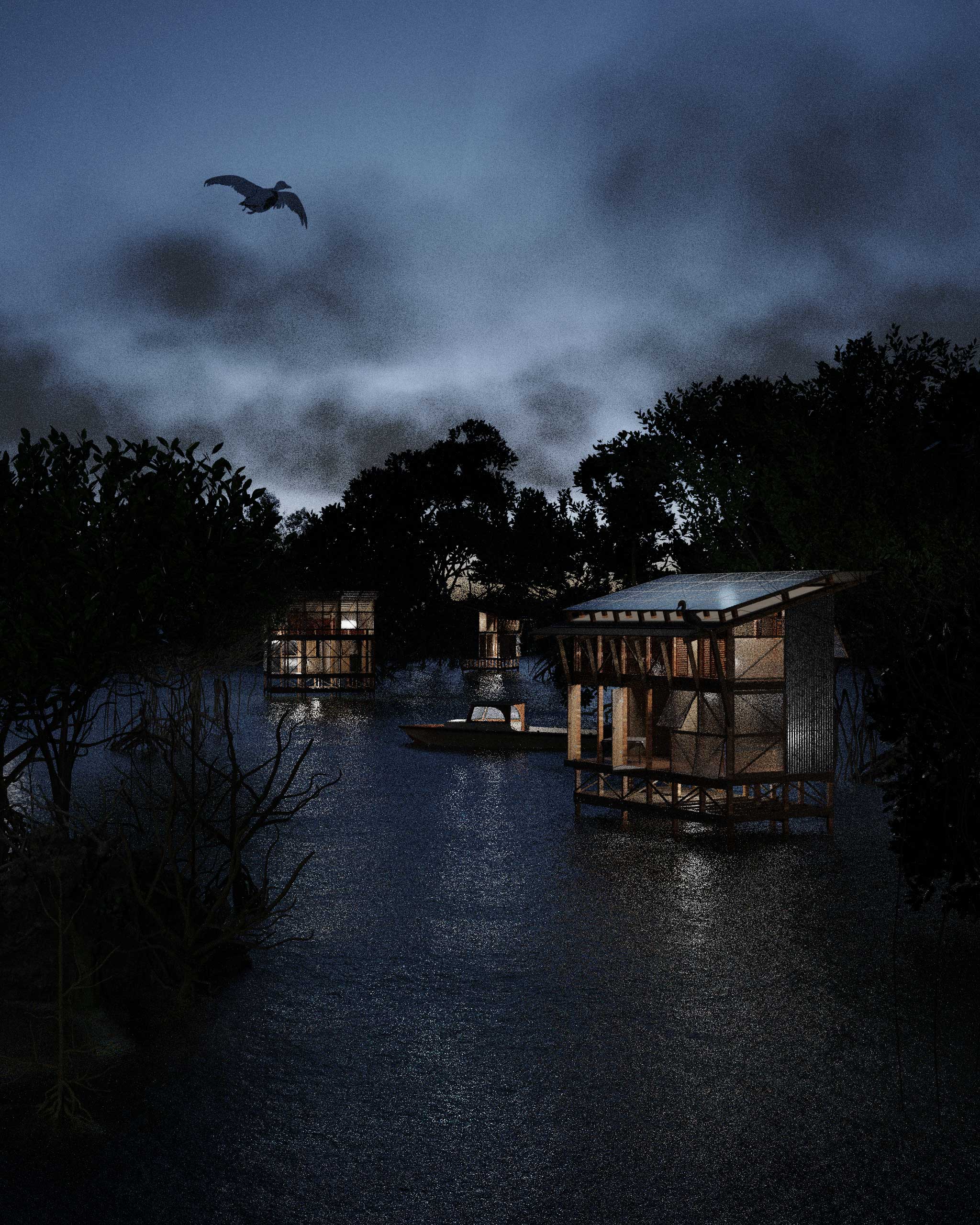Cheng Xuan Li
Das wachsende haus (the growing house) in extreme habitats
Location: Sundarbans, Bangladesh
Year: 2022
Part of A Competition Entry for Extreme Habitat Competition by Volume Zero Competitions, Awarded with Honourable Mention



In 1932, Martin Wagner organised a housing exhibition that laid down a multitude of growable and extendable housing typologies as a response to the interwar housing crisis. The leitmotif of most schemes were to cater to the growing needs of modern families through the introduction of flexible and extendable spatial devices and arrangements.
Today, 90 years afterwards, when we revisit and reappraise the modernist housing questions and experiments with advanced skillsets and more evolved knowledge, we are certainly offered an elevated perspective theoretically, however any attempts could be feeble without the appreciation of the natural and societal constraints bestowed upon by the context.
This design operates in the scope of mangrove forests in Sundarbans, Bangladesh and India. It proposes an infrastructural device for living and well-being in mangrove forests, and provides shelter for various types of groups and families, including local forestry workers, tourists, and underprivileged personnel with a demand of place of retreat during conditions of emergency. This scheme delivers a housing prototype of 441 sqft that contains only the essential equipment of living, yet it could be easily be reconfigured, expanded, extended and multiplied in the case of need.